
- Organizational Design - Home
- Organizational Design - Introduction
- Organizational Design - Evolution
- Common Forms
- Factors Influencing
- Case Study 1
- Case Study 2
- Organizational Design - WorkSheet
- Case Study 3
Organizational Design - Common Forms
Some of the most common strategies along which Organizational Grouping is done are behavior, function, product, customer, market and matrix. People are assigned teams based on these lines of functioning and are given instructions and their objectives and the managers are entrusted with the successful implementation.
After delegating work to different departments, the management then decides the hierarchy of reporting of the departments and selects the ones whose managers will report to them directly regarding progresses and areas of concern. All these types of organization represent a structure for an organizations design, where there is a clear chain of hierarchy and flow of communication.
Some of the most important design models are given below −
- Functional Organizational Design Model
- Geographical Organizational Design Model
- Product-oriented Organizational Design Model
- Market-oriented Organizational Design Model
- Matrix Structure Organizational Design Model
Let us now discuss in detail each one of these design models and see how they help organizations in their functioning.
Functional Organizational Design Model
Organizations that implement the functional model of organizational design divide their functioning into different fields. For example, there will be different boxes for different departments like marketing, finance, sales, legal, R&D and HR, etc. These departments will have their own separate board-level departments and sub-departments. This structural arrangement is reminiscent of the military line of command, where a strict pyramidal hierarchy and chain of action was observed.
The size and sub-divisions of each department varies according to the business needs. For example, if it is a law firm, their legal department will be more populated and sub-divided as compared to their R&D Department. Some organizations merge their Sales Department with the Marketing Department, so that the managers can work in-sync and bring ideas that support each others functioning.
Functional organizational structures are best for self-contained working units, such as a small company or a freelance-assignment team. The downside to this structure is that because of the strict hierarchical framework, issues tend to escalate to the vertical reporting authority, rather than getting sorted out by mutual understanding between two lateral units.
A typical functional organizational structure would look like this −
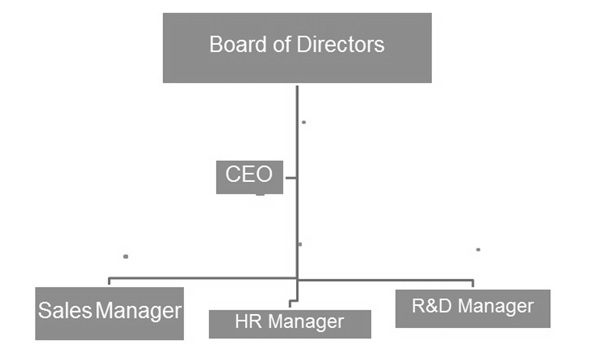
Geographical Organizational Design Model
As long as organizations remained localized, it was considered that the functional design is best suited for running business. However, when companies expanded and started operating beyond international boundaries, there was a need felt for a globalized model, which considers all the geography-influenced factors like local festivals, culture, communication style, way of conducting business, etc.
Example
A boss is a very formal, distant and authoritative figure in Russia, unlike the team player bosses that are the norm in the USA. To address such issues, multinational organizations started adopting to a geographical organizational structure.
Geographical organizational structure is tailor-made to suit the workings of an organization which has business presence in different countries and wants to understand the native culture of that place in order to understand its customers better. In this model, the top management employs local decision-makers to implement plans suited to local sensibilities. However, there is a potential issue with the usage of this organizational model by a company, which wants to have a global brand identity and has strong core values that it wants to be practiced in all cultures. In such situations, friction often arises between the regional offices and head office.
A typical geographical organizational structure would look like this −
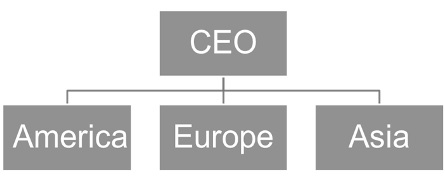
Product-oriented Organizational Design Model
In such models, the organization designs itself are based on its products. For example, a company that manufactures domestic electrical appliances may divide its business model on its prime-selling products, such as fans, water pumps, etc. Each product will have its own set of operations, employees, offers, etc.
This model works best in organizations that provide entrepreneurial opportunities to people with good business ideas. These people are made managers and an entire unit is assigned to them. In such a competitive environment, where different product lines are being run by separate teams dedicated to its marketing, promotion and sales; rivalry is sure to develop. This rivalry is healthy for business. However, if not nurtured in a healthy way, it can lead to bitter conflict after a particular stage.
A typical product-oriented organizational structure would look like this −
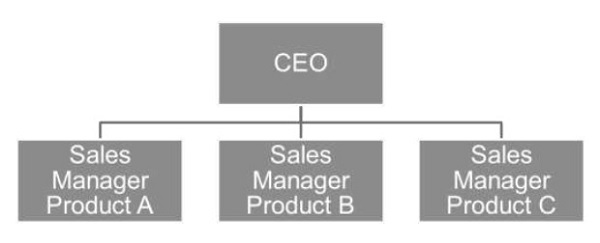
Market-oriented Organizational Design Model
In a market-oriented organization model, the focus of the company is in addressing the needs of the customers, as opposed to manufacturing products and creating the market for them, which the food industry often does. These models revolve around the logistics of serving a small number of customers, who can give them the business they need to be profitable. In such cases, it is very often to find an entire plant dedicated to manufacturing just a single line of products.
A few notable examples of organizations that adopt this model are from the automobile industry. Companies like BMW, Ferrari, Ducati, etc. have a niche customer base. These companies cater only to their customer base. The less number of customers gives a good opportunity for the sales managers to build strong business relationships with their clients. The customers also appreciate the personalized touch and enhanced customer service.
Such models work best when high quality assurance is given and the business growth depends more on interpersonal skills and relationship-building, as opposed to heavy advertisements and promotion.
A typical product-oriented organizational structure would look like this −
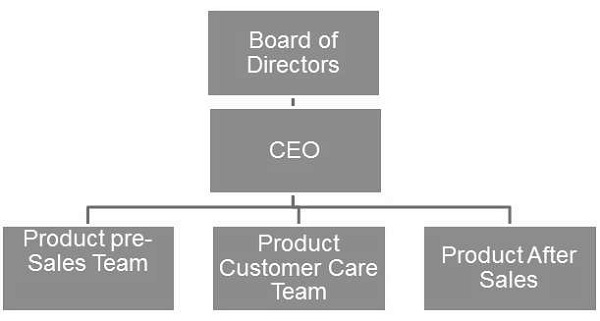
Matrix Structure Organizational Design Model
Matrix Structures are used when there is a high demand from the customers as well as a fundamental need to ensure efficiency and bureaucracy. This structure is used when projects employing many people are implemented and the clients want one organization whom they can entrust for the successful implementation of their plan. A few such sectors are construction, architecture, civil engineering, etc.
In this model, an employee reports to two bosses at the same time − one, an immediate supervisor and the other one the manager of the process. This results in role conflict and authority-related issues. If the supervisor and manager end up giving two conflicting or opposing instructions, then the employee gets stuck between two authorities.
A typical Matrix organizational structure would look like this −
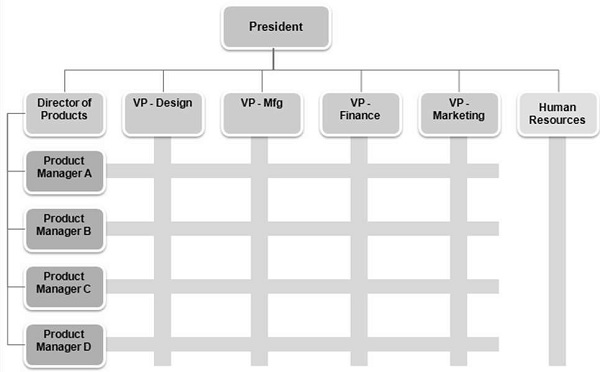
Conclusion
In spite of these different organizational models, companies dont have to stick to just one organizational model for all their businesses. In fact, many multinational companies implement product-oriented organizational design models in one country, whereas operating on a matrix model in some other country. Successful companies manage to find scopes of usage of all these models in different places and processes.